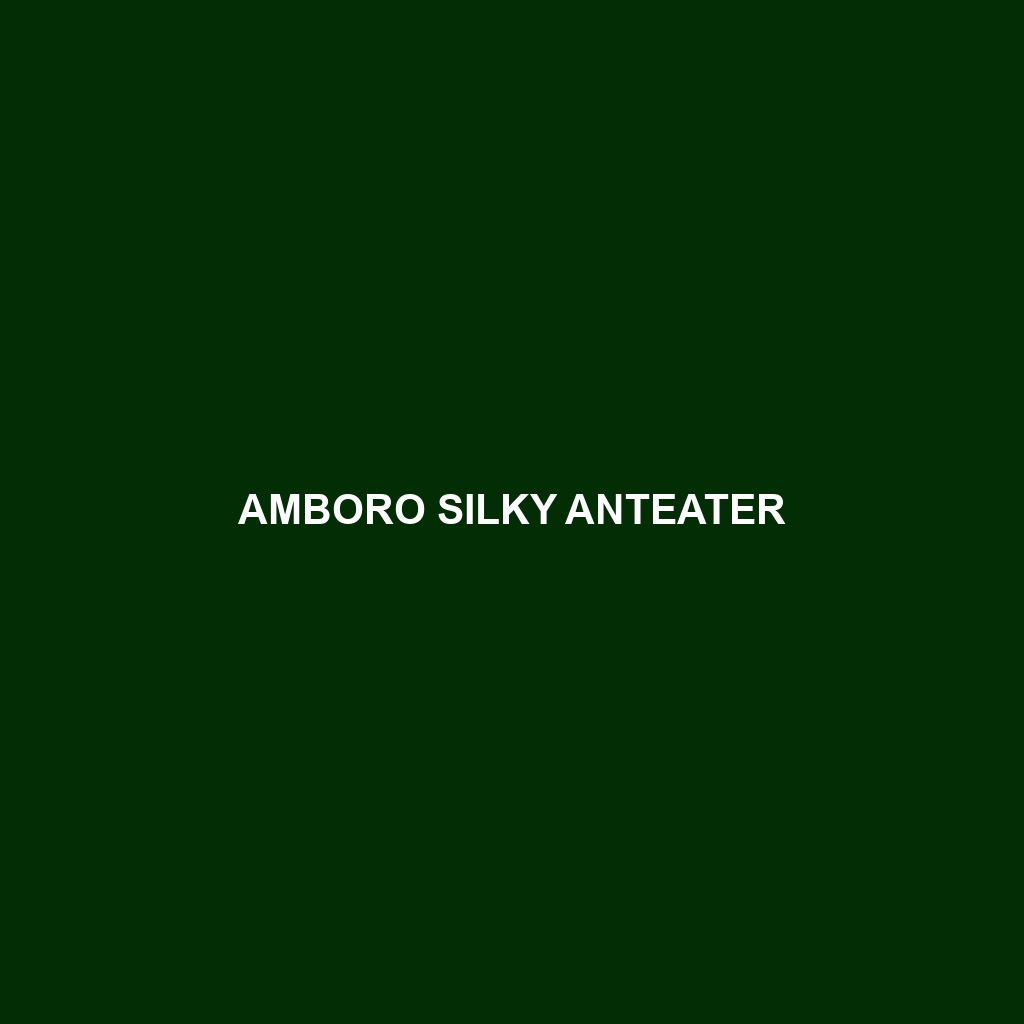Amboro Silky Anteater: A Detailed Overview
The Amboro Silky Anteater (Cyclopes didactylus), also known as the pygmy anteater, is a small, arboreal mammal native to the tropical rainforests of South America, particularly within the Amboro National Park in Bolivia. Known for its silky fur and diminutive size, this fascinating creature is a marvel of evolutionary adaptation. Its elusive nature and nocturnal habits make it a rare sight, adding an aura of mystery to its already captivating presence.
Physical Characteristics
Size: The Amboro Silky Anteater is the smallest of all anteaters, typically measuring between 16 to 22 cm (6.3 to 8.7 inches) in body length, with a prehensile tail that adds an additional 16 to 19 cm (6.3 to 7.5 inches).
Weight: These tiny mammals weigh between 200 to 400 grams (7 to 14 ounces).
Coloration: Their fur is a striking golden-yellow or silvery-grey, giving it a silky appearance. This coloration helps them blend seamlessly into their forest environment.
Special Features: They have a distinctive prehensile tail, which is almost as long as their body and covered in fur. Their limbs are equipped with sharp, curved claws that are perfect for climbing trees and tearing open ant nests. Their elongated snout and long, sticky tongue are specialized for feeding on ants and termites.
Behaviors
Social Interactions: Amboro Silky Anteaters are primarily solitary animals, coming together only for mating. They are nocturnal and primarily arboreal, spending most of their time in the canopy.
Feeding Habits: These anteaters have a diet that consists mainly of ants and termites, which they extract from nests using their long, sticky tongues. They can consume thousands of insects in one night.
Ecological Roles: As insectivores, they play a crucial role in controlling ant and termite populations, contributing to the ecological balance of their rainforest habitat.
Habitat
Location: The Amboro Silky Anteater is found in the tropical rainforests of South America, with a significant population in Bolivia’s Amboro National Park.
Environment: Preferring dense, humid forests with abundant tree cover, they are well adapted to an arboreal lifestyle. They are typically found in the mid to upper canopy layers.
Adaptations
Arboreal Adaptations: Their prehensile tail and curved claws make them agile climbers, capable of navigating the complex structures of the forest canopy.
Dietary Adaptations: The elongated snout and specialized tongue allow them to efficiently exploit their primary food source—ants and termites.
Camouflage: Their silky, golden-yellow fur provides excellent camouflage against the backdrop of the forest foliage.
Conservation Status
As of current evaluations, the Amboro Silky Anteater is not listed as endangered, but it is considered to be of least concern. However, habitat destruction and deforestation pose significant threats to their population. Conservation efforts in protected areas like Amboro National Park are crucial for their continued survival.
Fun Facts
Unique Vocalizations: Amboro Silky Anteaters are known to produce a variety of vocalizations, including whistles and chirps, which are believed to be used for communication, especially between mothers and their young.
Fossil Records: Evidence suggests that silky anteaters have been around for millions of years, making them one of the more ancient lineages of anteaters.
Sleep Habits: They are known to wrap themselves in leaves or in their own tail while sleeping, creating a cozy, nest-like environment.
Conclusion
The Amboro Silky Anteater is a remarkable example of nature’s ingenuity, with its unique adaptations and vital ecological role. Preserving this enigmatic creature and its habitat ensures that future generations can continue to marvel at this silky, golden wonder of the tropical rainforest.
